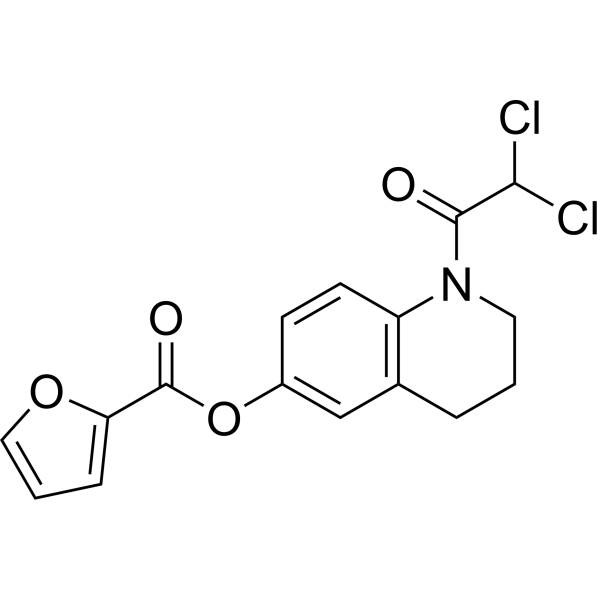
Quinfamide
CAS No. 62265-68-3
Quinfamide( WIN-40014 )
Catalog No. M26803 CAS No. 62265-68-3
Quinfamide is a compound with the potential to treat tropical parasitic infections such as Amoebiasis and Helminthiasis.
Purity : >98% (HPLC)
 COA
COA
 Datasheet
Datasheet
 HNMR
HNMR
 HPLC
HPLC
 MSDS
MSDS
 Handing Instructions
Handing Instructions
| Size | Price / USD | Stock | Quantity |
| 5MG | 199 | Get Quote |


|
| 10MG | 285 | Get Quote |


|
| 25MG | 510 | Get Quote |


|
| 50MG | 732 | Get Quote |


|
| 100MG | 1017 | Get Quote |


|
| 200MG | Get Quote | Get Quote |


|
| 500MG | Get Quote | Get Quote |


|
| 1G | Get Quote | Get Quote |


|
Biological Information
-
Product NameQuinfamide
-
NoteResearch use only, not for human use.
-
Brief DescriptionQuinfamide is a compound with the potential to treat tropical parasitic infections such as Amoebiasis and Helminthiasis.
-
DescriptionQuinfamide is a compound with the potential to treat tropical parasitic infections such as Amoebiasis and Helminthiasis.
-
In Vitro——
-
In Vivo——
-
SynonymsWIN-40014
-
PathwayOthers
-
TargetOther Targets
-
RecptorHIF-2α
-
Research Area——
-
Indication——
Chemical Information
-
CAS Number62265-68-3
-
Formula Weight354.18
-
Molecular FormulaC16H13Cl2NO4
-
Purity>98% (HPLC)
-
SolubilityIn Vitro:?DMSO : ≥ 125 mg/mL (352.93 mM)
-
SMILESClC(Cl)C(=O)N1CCCc2cc(OC(=O)c3ccco3)ccc12
-
Chemical Name——
Shipping & Storage Information
-
Storage(-20℃)
-
ShippingWith Ice Pack
-
Stability≥ 2 years
Reference
1.Xu R, et al. 3-[(1S,2S,3R)-2,3-Difluoro-1-hydroxy-7-methylsulfonylindan-4-yl]oxy-5-fluorobenzonitrile (PT2977), a Hypoxia-Inducible Factor 2α (HIF-2α) Inhibitor for the Treatment of Clear Cell Renal Cell Carcinoma. J Med Chem. 2019 Aug 8;62(15):6876-6893.
molnova catalog



related products
-
Ethionine
Ethionine is an antimetabolite and methionine antagonist. It also produces liver neoplasms.
-
1-Cinnamoylpyrrolidi...
1-Cinnamoylpyrrolidine, a natural product prepared from Piper caninum, can be used as a DNA strand breaking agent, inducing the relaxation of the plasmid pBR322 DNA superhelix in the presence of Cu2+. 1-Cinnamoylpyrrolidine inhibits PAF-induced platelet aggregation with an IC50 value of 37.3 μM. value was 37.3 μM.
-
Betamipron
Betamipron is a chemical compound which is used together with panipenem to inhibit panipenem uptake into the renal tubule and prevent nephrotoxicity.



 Cart
Cart
 sales@molnova.com
sales@molnova.com


